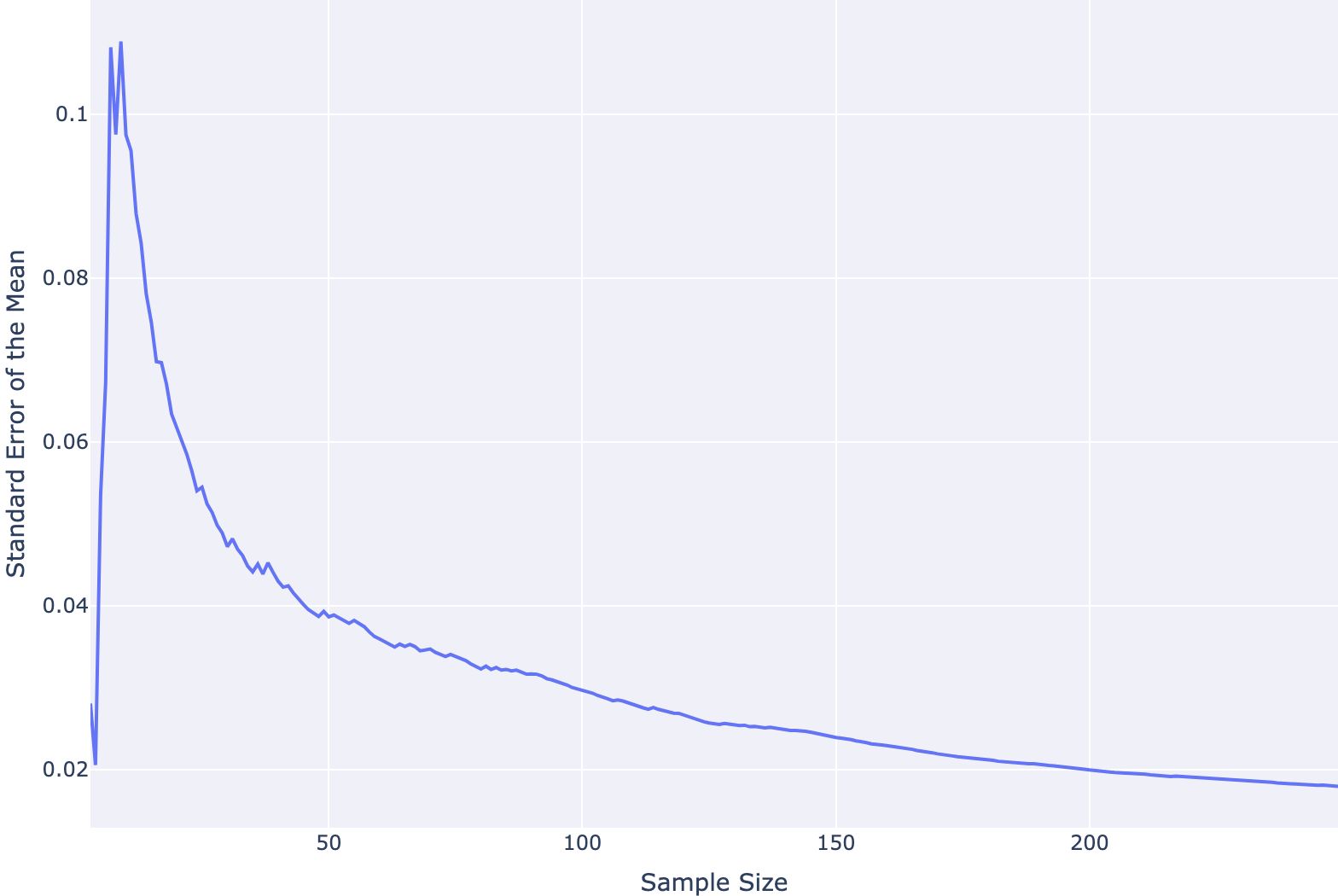Preamble
:dep darn = {version = "0.3.4"}
:dep ndarray = {version = "0.13.1"}
:dep ndarray-csv = {version = "0.4.1"}
:dep ureq = {version = "0.11.4"}
:dep ndarray-stats = {version = "0.3.0"}
extern crate csv;
extern crate ndarray;
extern crate noisy_float;
use std::io::prelude::*;
use std::fs::*;
use ndarray::prelude::*;
use ndarray_csv::Array2Reader;
use std::str::FromStr;
use noisy_float::types::n64;
use ndarray_stats::{QuantileExt, interpolate::Nearest, interpolate::Midpoint};
Introduction
In this section, we're going to take a look at some of the tools we have for descriptive statistics. Some of these are built into the ndarray crate that we're already familiar with, but some of them require another crate, ndarray-stats. This crate provides more advanced statistical methods for the array data structures provided by ndarray.
The currently available methods include:
- Order statistics (minimum, maximum, median, quantiles, etc.);
- Summary statistics (mean, skewness, kurtosis, central moments, etc.)
- Partitioning;
- Correlation analysis (covariance, pearson correlation);
- Measures from information theory (entropy, KL divergence, etc.);
- Measures of deviation (count equal, L1, L2 distances, mean squared err etc.);
- Histogram computation.
For now, we'll focus on the first few methods we would normally use when interrogating a numerical dataset, e.g. central tendency and variance.
Loading our Dataset
We will continue using the Iris Flower dataset, so we need to load it into our raw string array first.
let file_name = "Iris.csv";
let res = ureq::get("https://datacrayon.com/datasets/Iris.csv").call().into_string()?;
let mut file = File::create(file_name)?;
file.write_all(res.as_bytes());
let mut rdr = csv::Reader::from_path(file_name)?;
remove_file(file_name)?;
let data: Array2<String>= rdr.deserialize_array2_dynamic().unwrap();
let mut headers : Vec<String> = Vec::new();
for element in rdr.headers()?.into_iter() {
headers.push(String::from(element));
};
Moving Data to Typed Arrays
We need to convert from String to the desired type, and move our data over to the typed arrays.
let mut features: Array2::<f32> = Array2::<f32>::zeros((data.shape()[0],0));
for &f in [1, 2, 3, 4].iter() {
features = ndarray::stack![Axis(1), features,
data.column(f as usize)
.mapv(|elem| f32::from_str(&elem).unwrap())
.insert_axis(Axis(1))];
};
let feature_headers = headers[1..5].to_vec();
let labels: Array1::<String> = data.column(5).to_owned();
Descriptive Statistics
Descriptive statistics help us summarize a given representation of a dataset. We can divide these into two areas: measures of central tendency (e.g. mean and median) and measures of variance (e.g. standard deviation and min/max values). Let's have a look at how we can calculate these using a combination of ndarray and ndarray-stats.
Measures of Central Tendency
Mean
Calculating the mean is one of the basic methods provided by ndarray. We can calculate the arithmetic mean of all elements in our array using .mean()
features.mean().unwrap()
3.463667
In the case of our two-dimensional array, we are more likely interested in the mean across one of our axes. To find the mean of each column we can use .mean_axis().
println!("{}", features.mean_axis(Axis(0)).unwrap());
[5.8433347, 3.054, 3.7586665, 1.1986669]
Median
Calculating the median is not provided by ndarray, so this is where we start turning to ndarray-stats. We can use the .quantile_axis_mut() function provided by ndarray-stats with a parameter setting of q=0.5 to return our median across a 1-dimensional lane, let's try this for the first column of our dataset.
features.column(0).to_owned()
.quantile_axis_skipnan_mut(
Axis(0),
n64(0.5),
&ndarray_stats::interpolate::Linear)
.unwrap().into_scalar()
5.8
This works well, but it would be nice to have an output similar to .mean_axis() where we calculate the median for each column and output as a vector. For this, we can make use of iterators provided by ndarray, .axis_iter().
features.axis_iter(Axis(1)).map(|elem| elem.to_owned()
.quantile_axis_skipnan_mut(
Axis(0),
n64(0.5),
&ndarray_stats::interpolate::Linear)
.unwrap().into_scalar()).collect::<Vec<_>>()
[5.8, 3.0, 4.3500004, 1.3]
Measures of Variability
Variance
To calculate the variance (computed by the Welford one-pass algorithm), we can use .var_axis() provided by .ndarray(). The delta degrees of freedom parameter, ddof, determines whether we calculate the population variance (ddof = 0), or the sample variance (ddof = 1).
With this, we can calculate the population variance for each column.
println!("{}", features.var_axis(Axis(0), 0.0));
[0.6811211, 0.18675052, 3.0924246, 0.57853156]
Similarly, we can calculate the sample variance for each column.
println!("{}", features.var_axis(Axis(0), 1.0));
[0.68569237, 0.18800387, 3.1131792, 0.5824143]
Standard Deviation
The standard deviation, .std_axis(), is calculated from the variance (again with the Welford one-pass algorithm) and works in a similar way to .var_axis(). The delta degrees of freedom parameter, ddof, determines whether we calculate the population standard deviation (ddof = 0), or the sample standard deviation (ddof = 1).
With this, we can calculate the population standard deviation for each column.
println!("{}", features.std_axis(Axis(0), 0.0));
[0.82530063, 0.4321464, 1.7585291, 0.7606126]
Similarly, we can calculate the sample standard deviation for each column.
println!("{}", features.std_axis(Axis(0), 1.0));
[0.82806545, 0.43359414, 1.7644204, 0.76316077]
Minimum and Maximum Values
For the minimum and maximum values across each column we will turn to ndarray-stats. We can use the .quantile_axis_mut() function again different parameter settings for q to return our minimimum and maximum values across 1-dimensional lanes. Let's pair this approach with .axis_iter() once again to calculate the values across multiple columns.
Minimum Value
To calculate the minimum value for each column we will need to use q = 0.0.
features.axis_iter(Axis(1)).map(|elem| elem.to_owned()
.quantile_axis_skipnan_mut(
Axis(0),
n64(0.0),
&ndarray_stats::interpolate::Linear)
.unwrap().into_scalar()).collect::<Vec<_>>()
[4.3, 2.0, 1.0, 0.1]
Maximum Value
To calculate the maximum value for each column we will need to use q = 1.0.
features.axis_iter(Axis(1)).map(|elem| elem.to_owned()
.quantile_axis_skipnan_mut(
Axis(0),
n64(1.0),
&ndarray_stats::interpolate::Linear)
.unwrap().into_scalar()).collect::<Vec<_>>()
[7.9, 4.4, 6.9, 2.5]
Conclusion
In this section, we had a look at some of the tools we have available for descriptive statistics. We used some of the basic functionality provided by ndarray, and turned to ndarray-stats for the more advanced functionality when we needed to.

